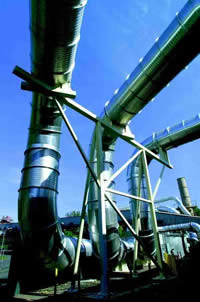|
IMPORTANT NOTICE:
This crra.org website is no longer active, but is being maintained as a historical record for the Connecticut Resources Recovery Authority (“CRRA”).
On June 6, 2014, Public Act 14-94 established the Materials Innovation and Recycling Authority (“MIRA”) as the successor authority to CRRA. As of this date, MIRA assumed control of all of CRRA’s assets, rights, duties and obligations.
For new information about MIRA, go to www.ctmira.org
--------------------------------------------------------------------------------------------
Concern for Connecticut’s air, water and soil led to CRRA’s creation in the 1973. Continuing concern for our state’s natural resources drives us to review technologies from around the world to provide the cleanest means possible for handling waste.
Our resources recovery facilities, which generate electricity from household garbage that cannot be recycled, help solve issues critical to Connecticut’s quality of life. At a time when volatile energy prices are affecting the state and national economies, CRRA is Connecticut's largest recycler, and Connecticut reliably recovers energy from 80 percent of its non-recyclable waste. In this way, our geographically small state is preserving valuable land for more productive uses than the town dump.
We’re also proud of the environmental improvements on our resource recovery plants. Connecticut's trash-to-energy facilities are governed by some of the world's strictest emissions standards. CRRA operates far above these standards by keeping the emissions far below the legal emissions limit. To control emissions, CRRA has done the following:
- In Hartford, we installed additional equipment to control NOx emissions years before any regulation would have required it. This facility now typically operates 80 percent below its strict emissions limits. Moreover, CRRA has upgraded its Mid-Connecticut Project facility with a $15 million odor control system to be the best possible neighbor to Hartford and surrounding towns.
 |
| Ducts from the odor control system draw in the air from the Mid-Connecticut waste processing facility and thermally destroy the odors in the boilers that combust garbage. |
- In Bridgeport, we accelerated the installation of a similar NOx control system, which was up and running a year ahead of state and federal requirements to do so. Click Bridgeport's Emissions Control Upgrade to read more.
- In Preston, our Southeast Project facility now has a new state-of-the-art NOx control system.
As for our landfills, they are among the most environmentally sound in the nation.
The Shelton landfill has been closed, and CRRA and the community are working together on a future use plan for the facility. It’s hard to imagine that the dump trucks and payloaders that used to populate the landfill have been replaced by wildlife from osprey to red foxes.
The Hartford landfill’s story is even more dramatic. Twenty years — and $13 million in environmental, health, and safety improvements — after leasing the Hartford
landfill from the city, independent studies confirm a clean bill of health.
- A groundwater protection system contains, pumps and treats all leaching rainwater.
- A gas extraction system collects the once-prevalent noxious landfill gases and harnesses their energy to generate power.
- Ash landfill cells are separately secured by controls including double liners, groundwater pump-and-treat systems and a daily cover regimen that virtually render it impervious to the air, ground and water.
As set forth in our mission statement, CRRA is “developing and implementing environmentally sound solutions and best practices for solid waste disposal and recycling management.” That means we will pursue the best available technologies from around the world to make sure that when our facilities can be improved, they are.

|
|

